Popular Internet Marketing Strategies To Grow Your Business
Even though online marketing has brought new opportunities for businesses to promote themselves, it can sometimes be daunting. There are so many popular Internet marketing strategies, each with its strengths and weaknesses.
However, not all strategies will suit your business needs. So, the first step to creating effective digital marketing strategies is choosing the best tactics for your specific requirements. If you aren’t sure where to start, you’ve landed on the right page.
Here, we’ll discuss eight popular and effective Internet marketing strategies. You’ll learn the workings of each, along with the benefits and challenges of Internet marketing. So, let’s begin right away.
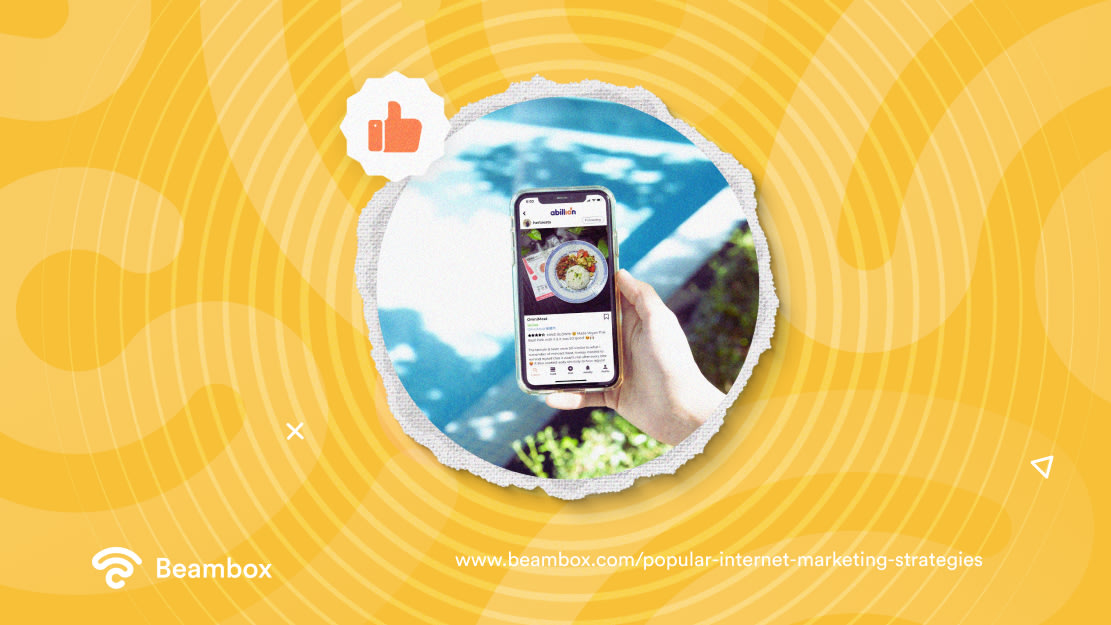
What Are Different Popular Internet Marketing Strategies: 8 Tactics That Work
Whenever people need information, they turn to the Internet. This also applies to information about businesses and their offerings.
That means potential customers are looking for businesses like yours. If you don’t try to appear before them, you might be leaving money on the table.
But what are the different popular Internet marketing strategies you can use to achieve that? Let’s discuss eight of them in the following few sections.
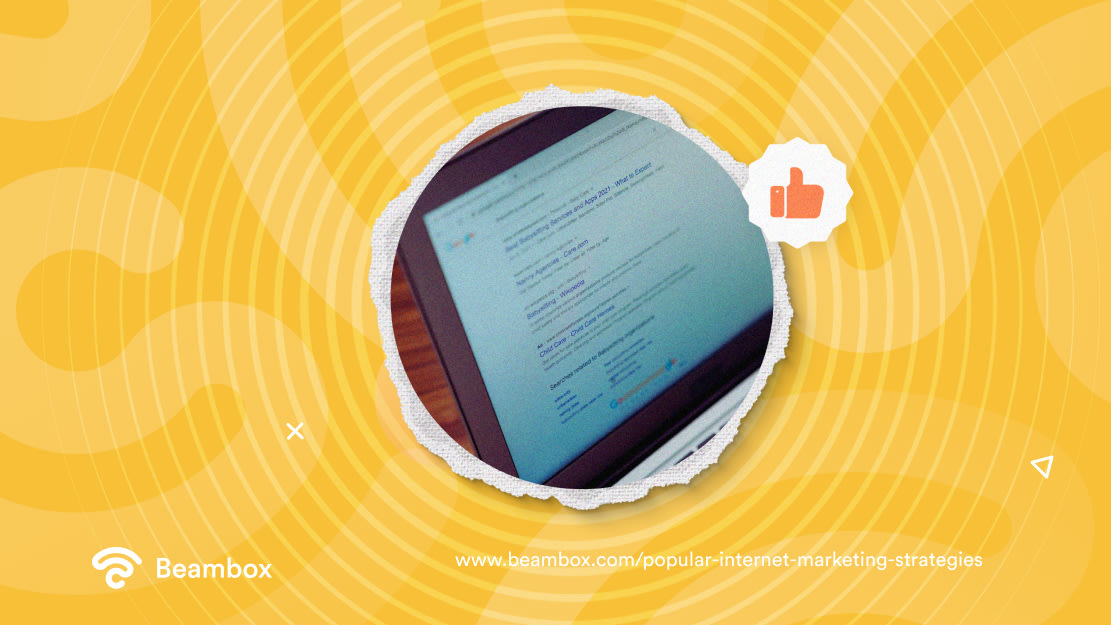
1. Search Engine Optimization To Beat the Competition
Search engine optimization (SEO) is one of the most popular online marketing strategies. It focuses on improving a website’s visibility in search engine results pages (SERPs.) The goal is to rank higher for relevant searches so your target audience can easily find your website.
Pulling this off means you get free, organic traffic to your website without lifting a finger. Once that happens, you can turn these curious visitors into loyal customers with conversion rate optimization. But how do you rank your website on search engines?
The first step is to determine what your target audience is searching for. Besides ranking, SEO marketing is about giving customers the information they need. The better your article fulfills the search intent, the higher you’ll rank.
You’ll need to use SEO tools and find the appropriate keywords to determine what people are searching for. Whether you use free or paid tools will depend on your budget, so you must tread carefully.
Once you’ve chosen the tool, search for a phrase relevant to your industry. For example, say you want to use SEO for a restaurant. You can use location-based keywords such as “best Italian food in Atlanta.”
This will benefit local SEO. You can also choose keywords for customer intent, such as “Romantic dinner places for Valentine’s Day.”
After creating a list of keywords, start audience targeting by creating content for them. Create engaging articles and strategically scatter the relevant keywords to help the search engine rank your article.
Once you’ve created the article, build backlinks so Google knows your website is trustworthy.
Lastly, pay attention to the technical aspects like mobile-friendliness, and you’re good to go.
Apart from organic search, you can also pay the platform to push your website higher up in the search results.
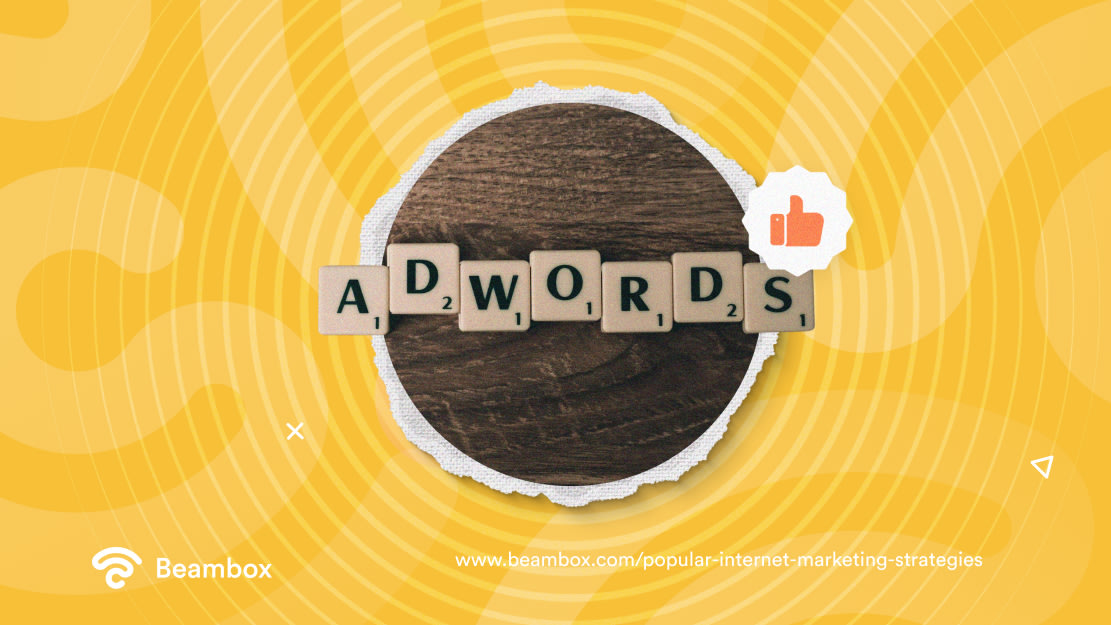
2. Pay-Per-Click Advertising To Get There Fast
You might not want to spend a lot when taking the first step in your digital marketing efforts. But while it’s good to focus on organic promotions, you can’t neglect the importance of paid ads.
More specifically, these are pay-per-click (PPC) ads that you display on digital channels of your choice. Every time someone clicks on your ads, you pay a fee.
Since this marketing works on bidding, you’ll have to decide how much you’re willing to pay for your ad. If you bid higher than others, you can outshine them. The best way to approach this type of advertising is to set a daily budget. Once things start working in your favor, you can increase it.
But how do you know which platform to choose? Well, search engine ads are the most popular here, so you can’t miss them. After all, whenever a person needs to search for a business, Google is the first source they turn to. If you don’t appear on your customers’ preferred platform, you might lose them.
On the other hand, you can display these ads on social media channels like Facebook, TikTok, etc. However, not all social networks will work for you. If you’re a bookseller, TikTok is probably the best option since that’s where most book readers are. But if you’re selling professional software, YouTube ads might perform better since you can upload full-length tutorials there.
Once you’ve chosen the platform, all you have to do is create the ad. You must ensure the ad entices onlookers and encourages them to click it. Introduce an element of curiosity and balance it out with information. When done right, PPC advertising can bring you new customers quickly.
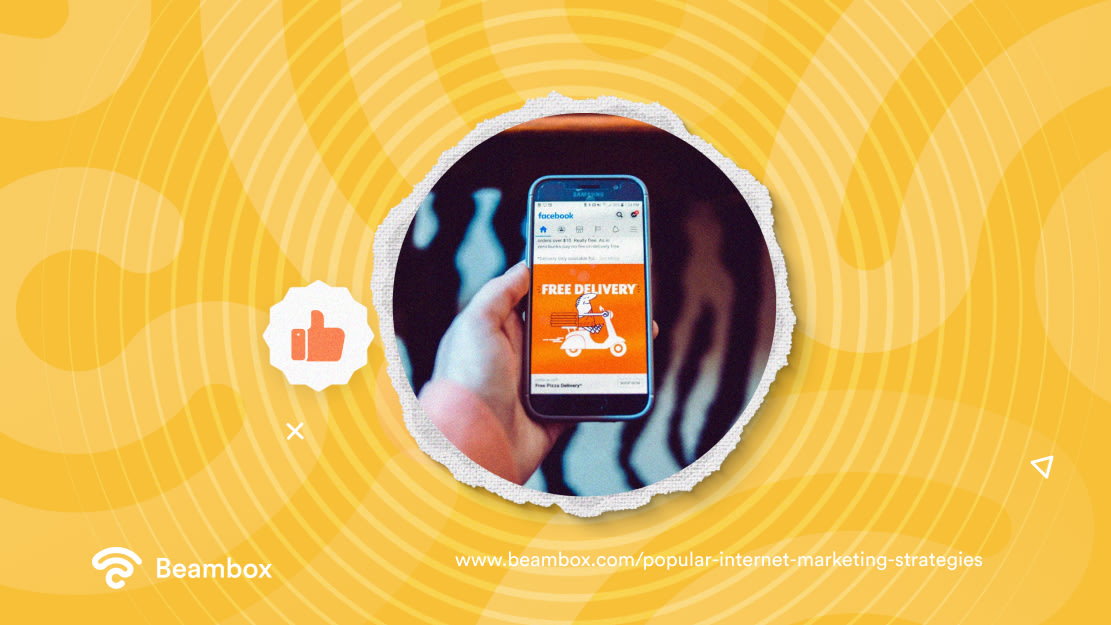
3. Social Media Marketing Because That’s Where Your Customers Are
This next marketing strategy is probably the most popular one. People spend hours on social media platforms, scrolling through Reels and posts. Almost all businesses make a smart move here by approaching customers where they are. In other words, they promote their products and services on social networks, partaking in social media marketing. If you want to follow suit, here’s what you must do.
Start by creating accounts on all major social media networks. This helps you post content when ready and provides a sense of legitimacy. If a person discovers a new business without social media accounts, they usually don’t trust it.
Once you’ve created the accounts, you must create content and post content frequently.
Remember, social media marketing is all about engagement, so avoid boring, generic posts. Moreover, each platform has its techniques, so you must familiarize yourself with those.

4. Content Marketing To Build Customer Loyalty
Another popular strategy is content marketing, where you create and distribute content to attract and retain customers. This type of marketing takes time, but its results are long-lasting. Here’s why.
People come across millions of ads where businesses try to get them to buy something. They are so prone to seeing these ads that they often ignore them. But when they see a valuable piece of content, they can’t help but interact with it.
For example, if you create an informative video about your industry targeting your audience’s pain points, they will watch it. They might not take immediate action, but that’s alright. The main goal here isn’t immediate purchases but rather customer loyalty.
When you constantly push valuable content in front of potential customers, you’re at the forefront of their minds.
Consequently, they’ll always turn to your brand when they want to buy products like yours, provided you’ve built enough trust. Besides, content marketing allows you to resolve customer problems before they face them.
Let’s say you sell a software system, and many of your customers have been complaining about its navigation menu. Seeing this, you can create a guide on using it, enhancing user experience (UX) for existing and potential customers.
However, this content doesn’t always have to be informative. You can also entertain your customers with jokes, contests, or trivia. It’s all about getting more eyeballs through articles, social media posts, videos, etc.
5. Affiliate Marketing for Inexpensive Promotion
Before buying a product, people read its reviews to judge whether it’s worth their investment. Taking advantage of this, you can sell your items through affiliate marketing. Here, you create an affiliate program and recruit people who can promote your products by creating content for them.
Along with this content, they share your unique link for the items. Your affiliates will earn a commission if someone buys your products through that link.
This method is inexpensive since you’ll only have to pay the affiliate after a customer purchase.
Besides, it’s a plus if the affiliate already has a substantial following on the platform where they promote your products. That way, you’ll be able to reach a wider audience. Moreover, these followers are more likely to listen to your affiliate, increasing conversion rates.
However, you must recruit people who can create valuable content to support the conversion. For example, if you sell business tools, the affiliate should be able to write informative and honest reviews about them.
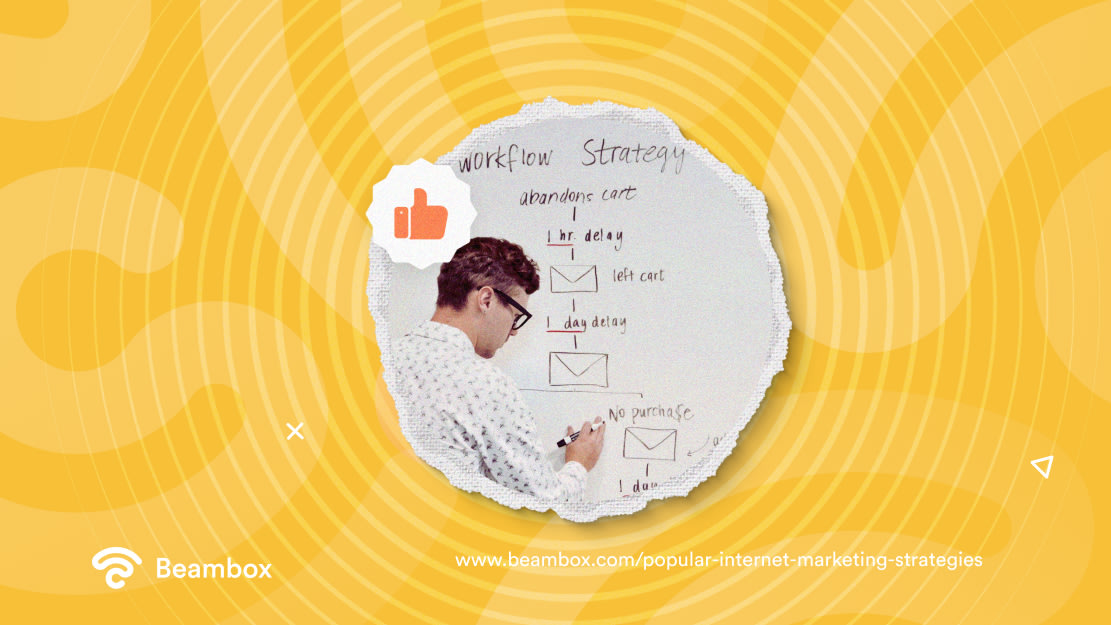
6. Email Marketing for the Most Personalized Promotions
Many people believe emailing doesn’t work anymore. They think customers want more modern ways, like social networks, to interact with brands. While that’s true on some levels, the concept of email being dead is absolutely a myth.
Email marketing is one of the best ways small businesses can use digital marketing campaigns. Successfully pulling it off means making your customers think you crafted the email specifically for them.
Besides, with other Internet marketing strategies, there’s no guarantee that the content will reach your intended audience. However, with email marketing, the email will land right in the person’s inbox, provided the email address is correct.
That brings us to the first step of creating an email marketing strategy - building email lists. The easiest approach here is to offer an incentive in exchange for the customer’s email address.
You’ll also need email marketing tools to help you design, write, edit, and automate email campaigns.
These tools can also help you create email workflows, where you determine what email to send after what action. Of course, the first email should always be a welcome email. However, after that, your strategy will depend on how the customer interacts with your emails.
If they’re never taking action, it might be a dead account that you must remove from your email list. That’s also part of basic email marketing, along with writing engaging subject lines and emails.

7. Influencer Marketing To Reach a Wider Audience
While this isn’t the first type of marketing that comes to mind, let’s discuss influencer marketing. This strategy involves collaborating with influencers with a strong online presence and following on social media.
As the name suggests, these individuals can influence their followers’ buying decisions. That’s because their audience trusts them, and you can take advantage of that. You simply have to contact these influencers and ask them if they would promote your business. You’ll have to give them an incentive in exchange for the promotion, but the results will be worth it.
However, you can’t initiate this process without researching and pinpointing the best influencers in your industry.
Besides, it’s not about the number of followers they have but rather the quality of engagement they get. If they have millions of followers but nobody buys the products they recommend, it won’t do you much good.
8. WiFi Marketing for Increased Customer Engagement
It might seem unrelated, but offering free WiFi also serves as an Internet marketing campaign. After all, customer demands are changing, and WiFi is becoming a constant.
In fact, 96% of customers prefer to visit businesses with free WiFi at their venue. Therefore, including WiFi marketing as the last item in our list of popular Internet marketing strategies makes sense.
If you’re unsure what WiFi marketing is, it’s simply using WiFi networks to engage with your customers. Here’s how to implement this strategy.
Start by setting up WiFi access points around your location. Next, create a separate guest network to avoid risking your business data.
Whenever a customer walks in, their wireless devices will pick up your WiFi signals. Now, you have two options for providing customers with Internet access. First, you can provide the password in exchange for basic customer data. Or you can set up a captive portal for your guest network.
This web page collects user information before granting them Internet access. You can create fields for names, email addresses, preferences, or any other information you want to collect. Later, you can use this information to create personalized ads.
Moreover, you can use the web page to display ads and promotions. There’s a greater chance of purchases here, provided they’re enticing enough. That’s because almost all your customers will want WiFi access and will have to view those ads.
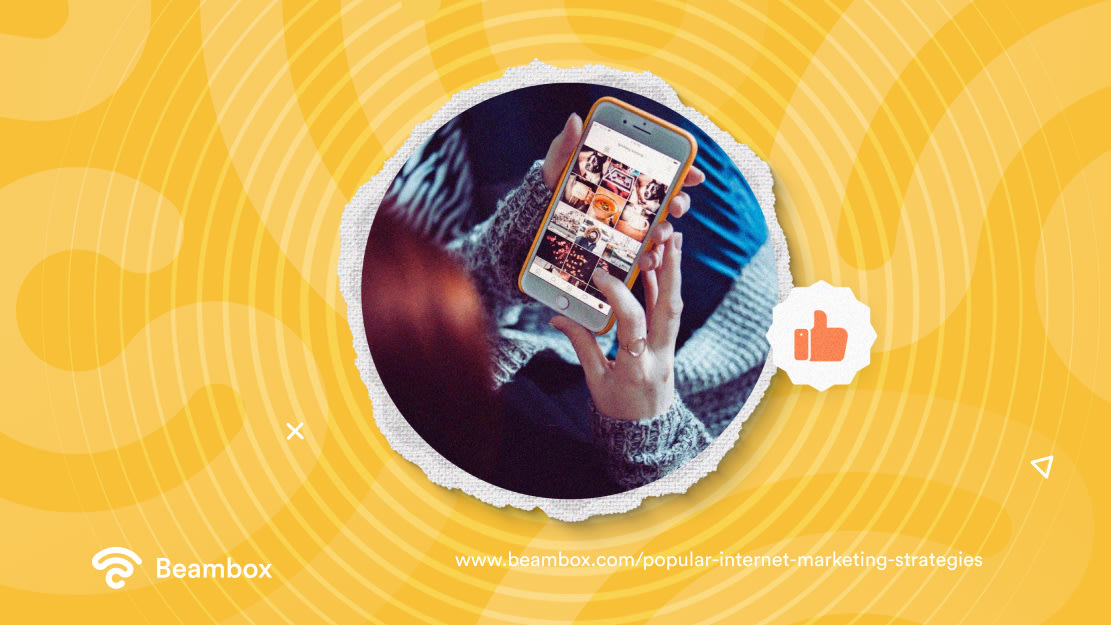
Pros and Cons of Internet Marketing
Now that you know the popular marketing strategies, you might wonder, “Why go through all that trouble?”
But the trouble will be worth it if you want to save money while promoting your business. You can easily create free listings on business directories, review sites, and create social media accounts.
Moreover, you can measure the results of your Internet marketing campaigns. You can judge what’s working and what isn’t. These insights will help you create more targeted and personalized campaigns.
However, just like everything else, Internet marketing also has its downsides. To create a fail-safe strategy, you must be aware of the challenges that might come your way.
One of the most prominent challenges is gaining the required skills if you’re going to do it all by yourself. This is definitely the case when businesses are just starting. But with everything else on their plate, business owners tend to hire freelancers or create an in-house team.
That can get quite expensive, not to mention the money you’ll spend on ads.
Moreover, there is a low barrier to entry since everyone is partaking in Internet marketing. So, it might be hard to stand out.
Lastly, organic approaches take time to show results, so be ready for that.
Internet Marketing Benefits for Local Businesses
Now you know the most popular Internet marketing strategies businesses leverage to promote themselves.
When local businesses use these strategies, they spread brand awareness and outshine other businesses. They also boost customer loyalty and retention by keeping them engaged. These Internet marketing benefits give local businesses leverage.
If finding the right marketing strategy sounds challenging, try out Beambox. It is a WiFi marketing platform that makes running popular marketing campaigns simple and lets you gather customer data.
It’s easy to set up and has no hidden fees. Start your free Beambox trial today to boost your marketing potential.
Get Started With Free WiFi Marketing
Beambox helps businesses like yours grow with data capture, marketing automation and reputation management.
Sign up for 30 days free


